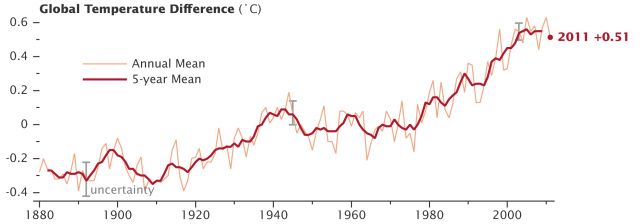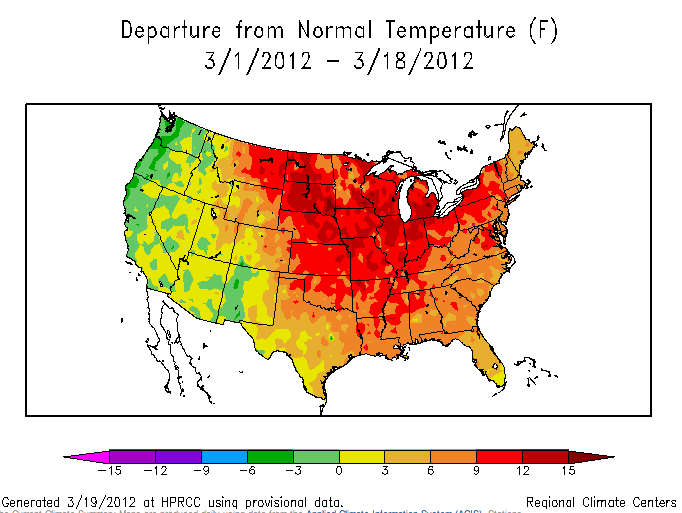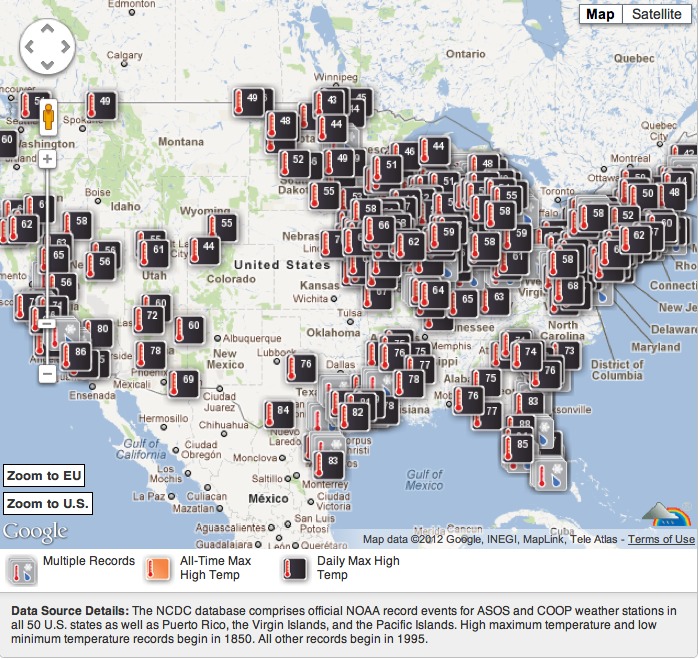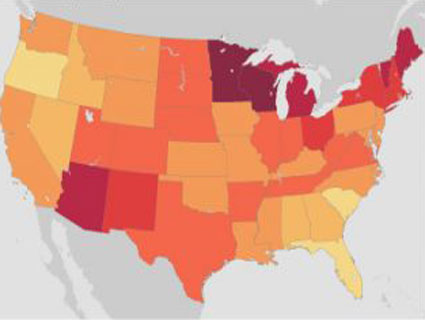Derived from Mizunoumi via Wikimedia Commons.
March’s mutant heat has been so extreme it’s crashed the ‘Extremes’ section of NOAA’s National Climatic Data Center (NCDC) website. Why? Because:
- the software couldn’t handle the huge number of high-temperature records being set and
- the site couldn’t handle the huge demand from people wanting to see the records
I’ve been so frustrated at being unable to access the site in the midst of one of the most extreme weather events in more than a century of record keeping that I found myself visited by a feverish little brain worm called ‘conspiracy.’
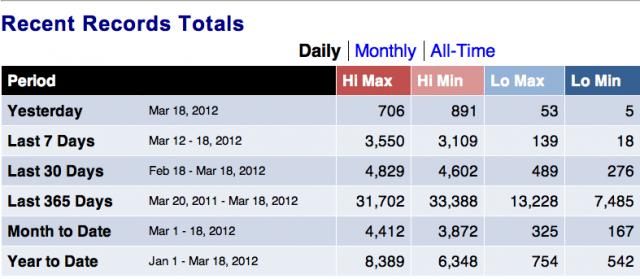 Credit: NOAA National Climatic Data Center.
Credit: NOAA National Climatic Data Center.
But according to Jeff Masters at Wunderblog the NCDC has spent the week reengineering their software to handle the extreme load on both records and demand.
Today the site is up and running again—though only with data through last Sunday. You can see in the chart above the monster rate of broken records. A few noteworthies:
- Not only are daytime high-temp records (Hi Max) falling but more impressively the number of nighttime high-temp records (Hi Min) are falling nearly as fast.
- Hi Max records are outpacing Lo Max (daytime low-temps) records by 25-to-1 last week.
- Hi Min records are outpacing Lo Min (nighttime low-temps) records by 16-to-1 last week.
Monster heat wave in N. America turns winter to summer: NASA Earth Observatory image by Jesse Allen, using data from the Level 1 and Atmospheres Active Distribution System (LAADS).
NASA’s Earth Observatory just published this map showing the intensity and scope of the heat wave as surface temperature anomalies. The map compares the current heat wave to average temps for the same eight-day period in March from 2000-2011. Warmer than average temps are red, near-normal temps are white, cooler than average are blue. From the Earth Observatory:
Records are not only being broken across the country, they’re being broken in unusual ways. Chicago, for example, saw temperatures above 26.6°Celsius (80°Fahrenheit) every day between March 14-18, breaking records on all five days. For context, the National Weather Service noted that Chicago typically averages only one day in the eighties each in April. And only once in 140 years of weather observations has April produced as many 80°Fahrenheit days as this March. Meanwhile, Climate Central reported that in Rochester, Minnesota. the overnight low temperature on March 18 was 16.6°Celsius (62°Fahrenheit), a temperature so high it beat the record high of 15.5°Celsius (60°Fahrenheit) for the same date.
Global temperature trend: NASA Earth Observatory, Robert Simmon.
Clearly 2012 is stomping the norm since 2000. And as you can see in this chart of rising global temperatures, the norm since 2000 has stomped all the norms of the prior century.


